Home / Mixers & Agitators
Mixers & Agitators
Industrial agitators are machines used in industries that process products in the chemical, food, pharmaceutical and cosmetic industries mostly for mixing the medias together.
These agitators have been designed to grant highest operational safety and fulfill all related standards to the greatest possible extents. The robust design as well as the easily and quickly replaceable mechanical seal ensure minimal maintenance costs and low operational costs.
- Reactor Agitators
- Industrial Agitators
- Side Entry Agitator
The purpose of agitators can be for mixing liquids, solids, slurries, pastes, mixing liquids and gases, mixing solids and gases, promote chemical reactions, promote heat transfer, etc. An agitator is installed in the vessel to ensure that the contents in the vessel become uniform and homogeneous and remain in a proper mixed state. Since they have such wide variety of uses, the agitators are used in a multitude of industries such as chemical, process, food, pharmaceuticals, cosmetics, metal extractions, ink, paint etc.
Agitators are used in a variety of industrial processes such as for carrying out a chemical reaction, for mixing operations, for filtration, for drying, for heat exchange, etc. The agitators are able to cater to such wide variety of applications because there are a variety of impellers which come in different shapes and sizes.
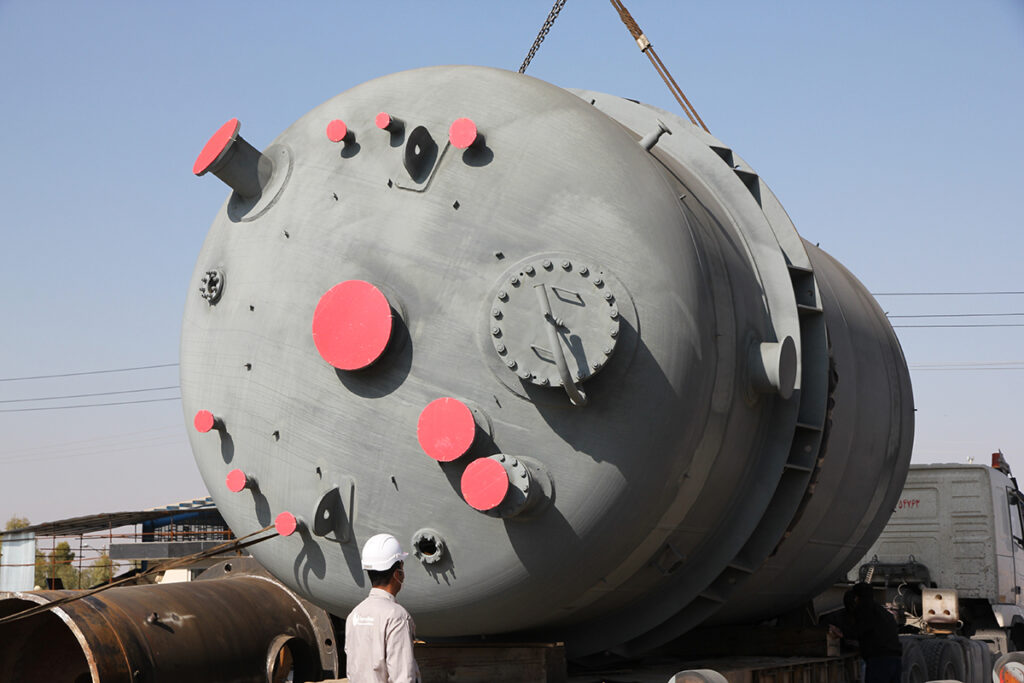
AGITATOR VESSEL
We design the ASME pressure vessels and tanks with custom configurations to meet agitator’s installation requirements. Our knowledge combined with the utilization of advanced engineering tools and fabrication standards enable us to meet the stringent regulations set by ASME. Our fabrication facility is well-equipped with various latest welding equipment.
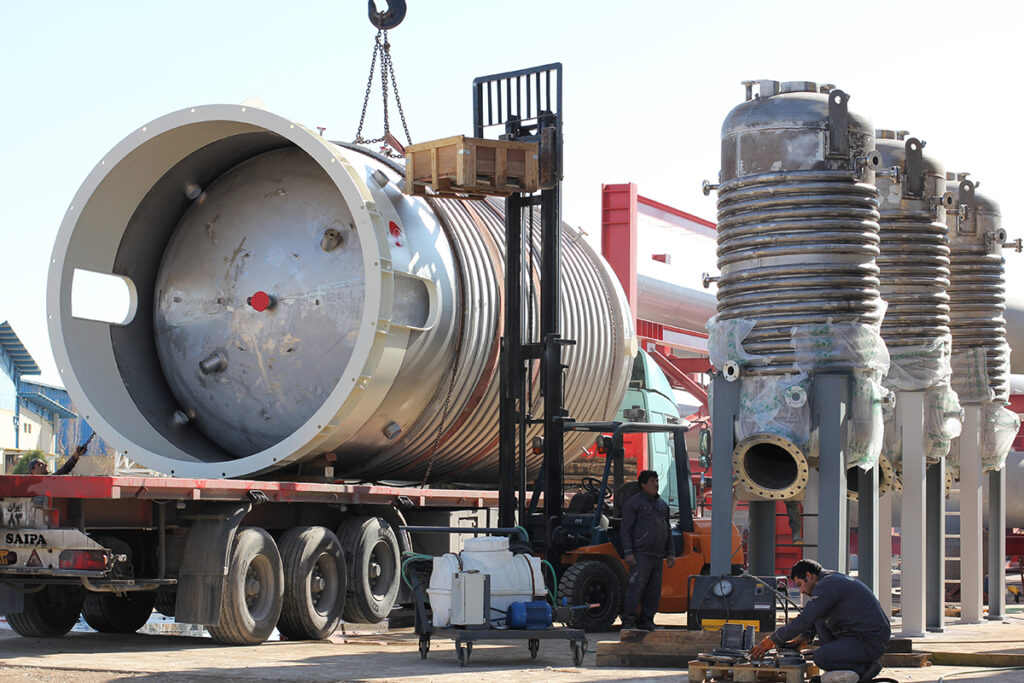
HEATING / COOLING COIL
Heating is required for endothermic reactions (reactions that consume energy), for vaporizing liquids that are being vaporized, or for bringing a vessel up to operating temperature. Cooling is needed for exothermic reactions, condensing vapors that are being condensed, and to bring a vessel down to operating temperature. Coils offer excellent heat transfer to fluids in the interior but generally not in a dished bottom.

Agitator Types:
A large variety of impeller configuration is used for a different range of applications. Agitators are categorized according to the following aspects: axial, radial or tangential, laminar, turbulent or transitional flows, viscosity of fluid an etceteras.
We are able to supply different kind of agitator impeller according to agitation requirements such as:
- Paddle Agitators
- Anchor type agitators
- Propeller type agitators
- Blade type agitators
- Turbine type agitators
- Helical Agitators
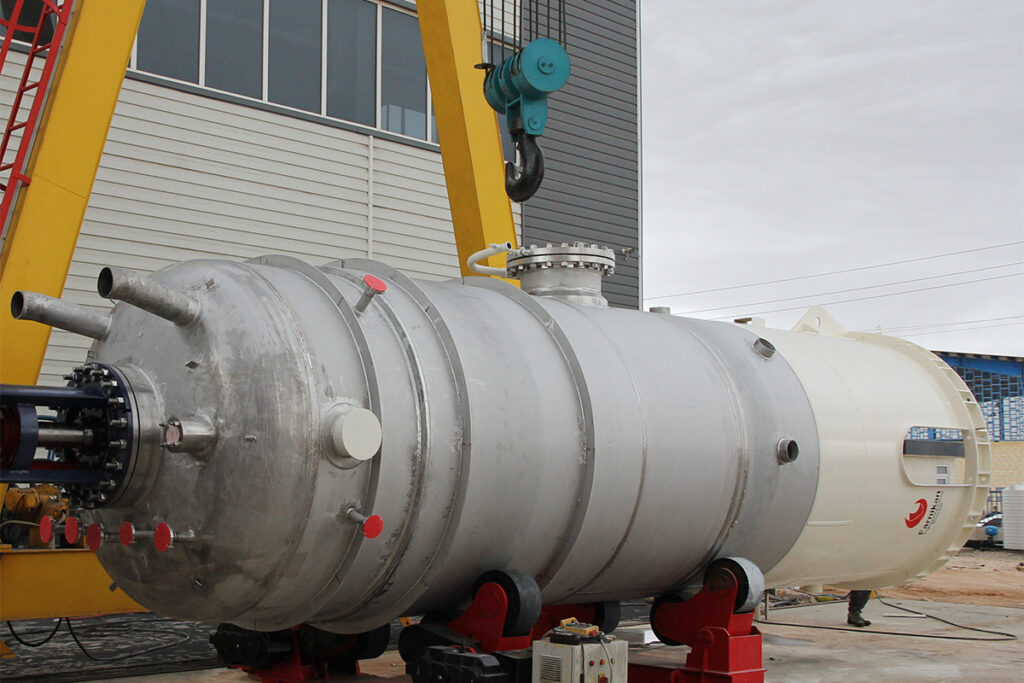
DOUBLE WALL
Cooling and heating can be applied directly to the vessel by heat transfer surfaces in the vessel exterior (e.g., jackets) or indirectly via a process recirculation stream. Jackets offer a more even heat transfer distribution. However, jackets have a lower utility velocity at the heat transfer surface that can increase fouling rate and require good mixing to ensure that the jacket has a uniform effect on the entire liquid contents.
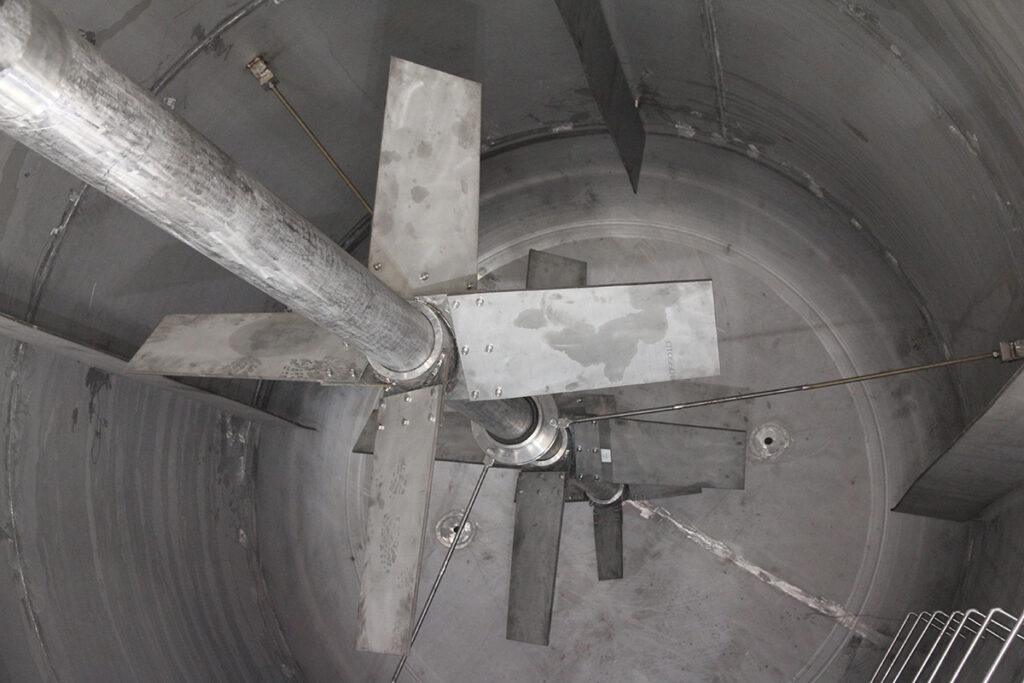
SHAFT ASSEMBLY
In general, agitators usually consist of an impeller and a shaft. An impeller is a rotor located within a tube or conduit attached to the shaft. It helps enhance the pressure in order for the flow of a fluid be done. In case of long shaft we will consider bearings in middle or bottom on vessel body in order to avoid resonance at high rotational speed.
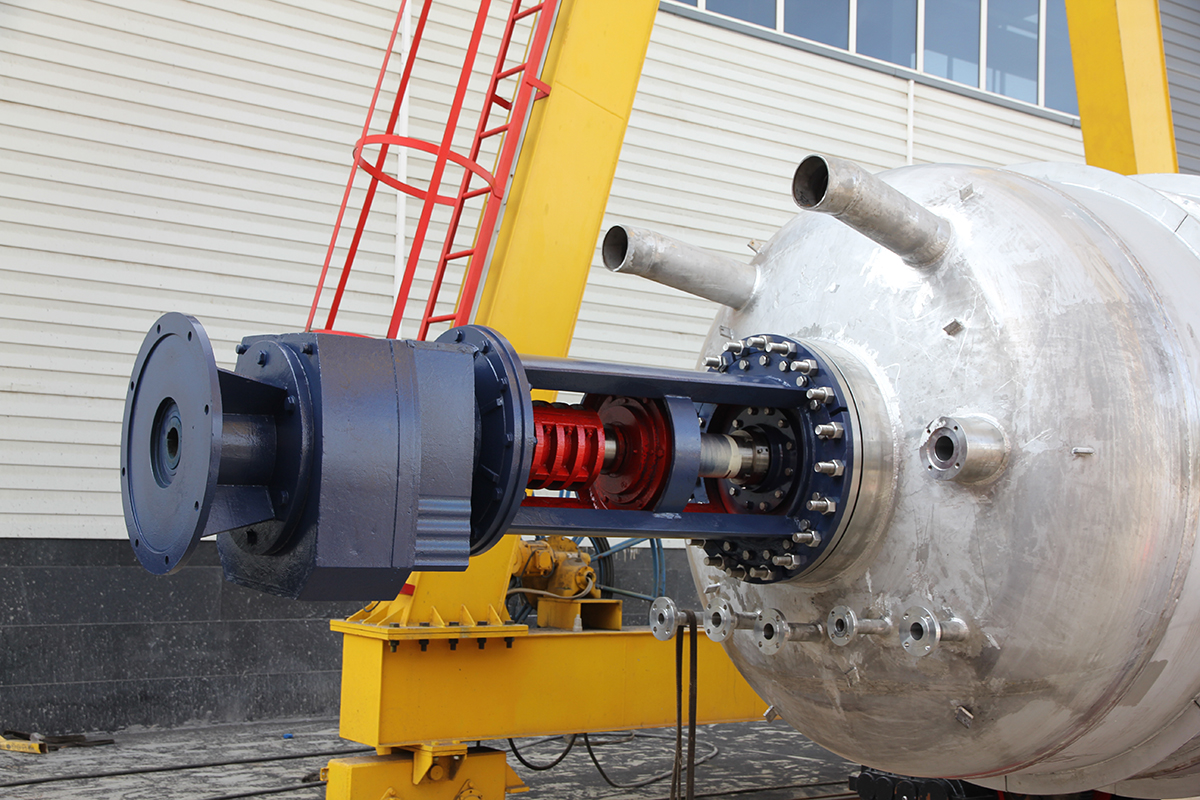
GEARBOX & SUPPORT
Typically, an agitator’s shaft is powered by a drive system comprising of an electrical motor, gearbox, beaing, support and couplings and other accessories. An electric motor drives the gearbox which in turn drives a shaft and stainless steel bladed paddle assembly. Based on process requirements speed is variable and controlled by using frequency inverter in local or main control panel.
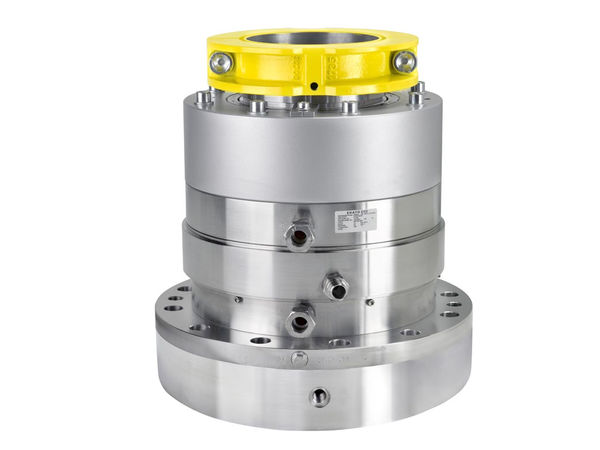
Mechanical Seal
In mixing technology, the sealing of a rotating agitator shaft in the passage through a vessel wall represents the principal sealing task. Different sealing principles are used depending on operating conditions such as pressure, temperature, and speed.
Single-end mechanical seal, double-ends mechanical seal and bearing mechanical seal are available. Wetted materials options can be austenitic stainless steel or even more robust materials such as duplex stainless steel. Depending on the operating environment,mechanical seal can be equipped with the following accessories: hand pump, balancing tank, sealing liquid tank and etc.
The main functions of using an agitator in any plant are:
- To get proper mixing of liquids.
- To promote chemical reactions inside the equipment.
- To increase heat transfer during heating or cooling
- To keep homogeneous liquid bulk during storage.
- To disperse immiscible liquids.
- To keep the product in a mixed state till used.
- To blend miscible liquids.
- To dissolve some solids into liquid.
The agitators are defined as a machine where an impeller with a rotating shaft imparts energy by mechanical means to mix various process media.
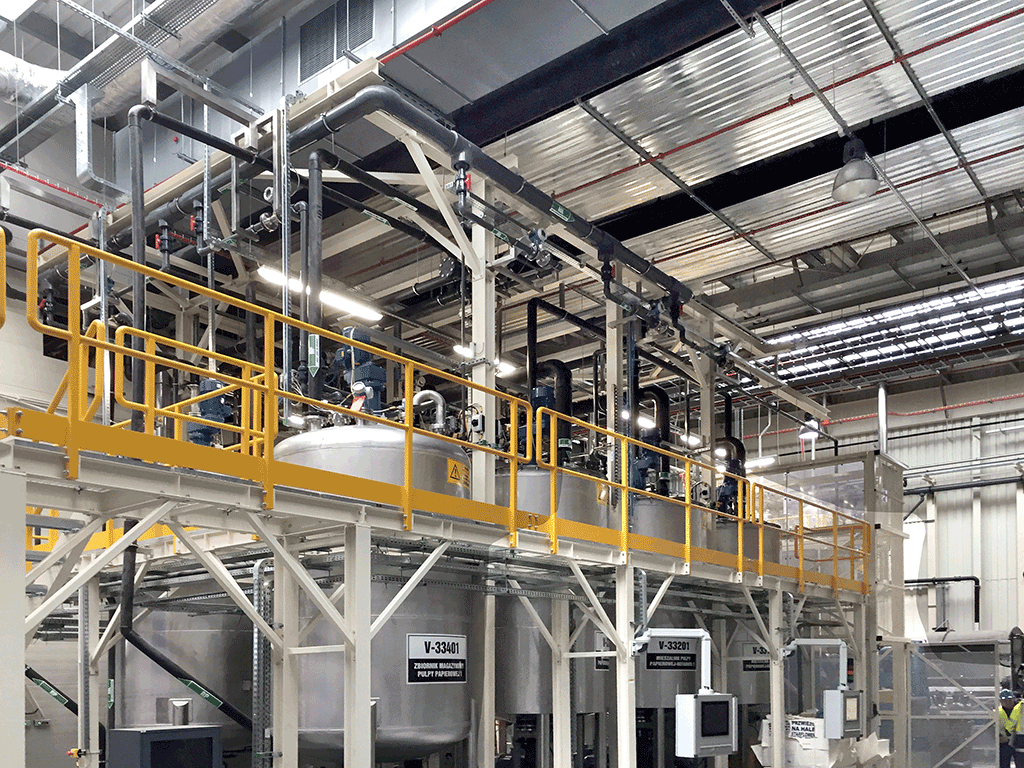
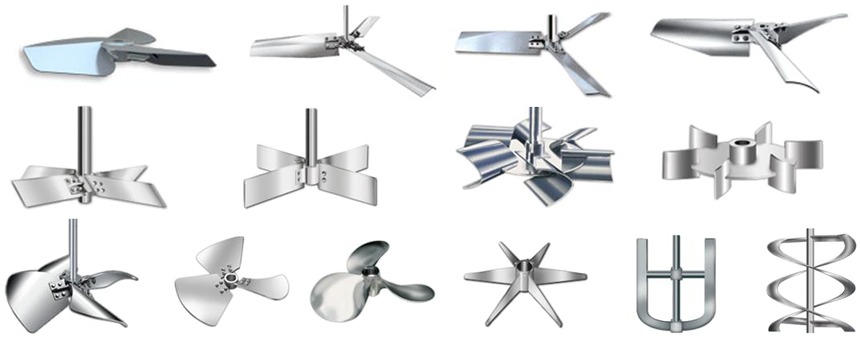
Types for Impellers
A large variety of impeller configuration is used for a different range of applications. Agitators are categorized according to the following aspects: axial, radial or tangential, laminar, turbulent or transitional flows, viscosity of fluid an etceteras.
We are able to supply different kind of agitator impeller according to agitation requirements such as: Paddle, Anchor, Radial Propeller, Turbine and Helical.
- Paddle Agitators
- Anchor type agitators
- Propeller type agitators
- Blade type agitators
- Turbine type agitators
- Helical Agitators
Agitators Application
| Type of Agitator | Applications | Advantages | Disadvantages |
| Paddle Agitator | Mixing of Solids, Slurry Mixing, Used during the Crystals forming phase during Supersaturated Cooling | Heavy-duty, Slow Operation, 2 to 4 blades. | High power consumption, Inefficient mixing. |
| Turbine Agitator | Liquids and gas reactions are widely used for reaction and extraction operations. | High radial flow, good for dispersion operation. | Not preferred for highly viscous solvents |
| Anchor Agitators | Widely used in the pharma industry. | High heat transfer rate. | High power and high-efficiency gearbox requirement. |
| Propeller Agitators | Can handle corrosive materials with a glass lining. | Increase homogeneity. Can be used for drying and pressing. | High-speed requirement. |
| Helical Blade | The Paint Industry. | Can efficiently handle visco-elastic liquids. | Low possibility for radial Mixing. |
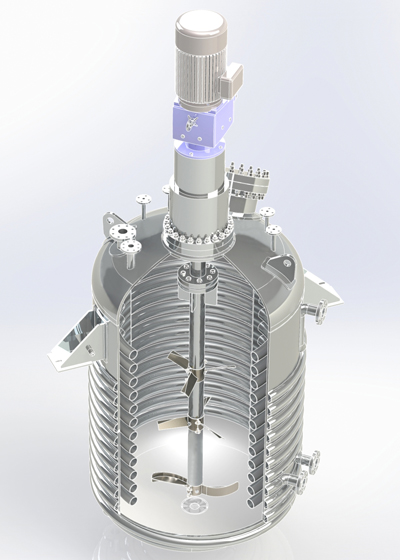
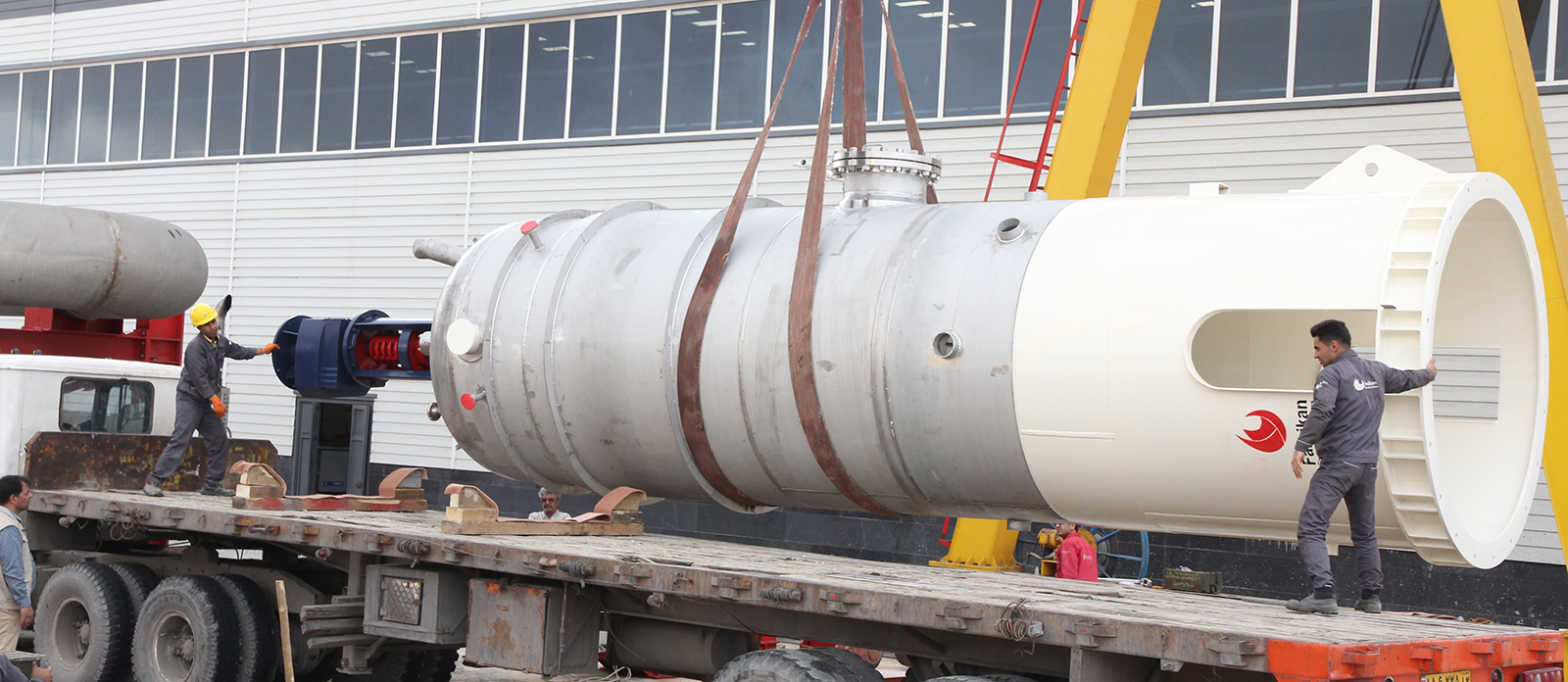
Working Principle
Process Criteria
How does an Agitator work?
The purpose of agitators can be for mixing liquids, solids, slurries, pastes, mixing liquids and gases, mixing solids and gases, promote chemical reactions, promote heat transfer, etc. An agitator is installed in the vessel to ensure that the contents in the vessel become uniform and homogeneous and remain in a proper mixed state. Since they have such wide variety of uses, the agitators are used in a multitude of industries such as chemical, process, food, pharmaceuticals, cosmetics, metal extractions, ink, paint etc.
